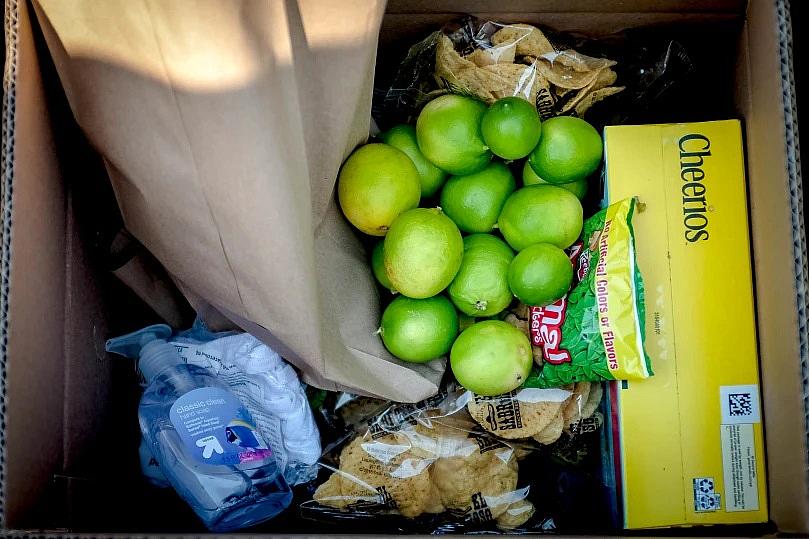In the Inland Empire, low incomes and food deserts create an ongoing health crisis

Javier Rojas
In the Inland Empire, roughly 400,000 people don’t have access to enough food on a daily basis.
Made up of Riverside and San Bernardino counties, the region has a population of more than 4.6 million people. The latest U.S. Census Bureau data shows the Inland Empire added 47,601 people in the year ended July 2021, the fifth-biggest gain among the country’s 50 largest metro areas.
Yet for one of the nation’s fastest growing regions, food insecurity is prevalent, and access to healthier eating options is limited. Factors at play including poverty, housing and race.
Some neighborhoods throughout the two counties have low access to grocery stores, also known as “food deserts,” according to the federal government. And where there are food options, they usually come in the form of fast-food restaurants.
This is the case for many rural communities, like Patton in San Bernardino, where grocery and produce stores are outnumbered by burger joints and liquor stores. Patton, which borders the city of San Bernardino, is an unincorporated community that’s best known as the location of a large, state-run psychiatric hospital.
The small community currently has more than a dozen fast-food restaurants, and two grocery chain stores along its main commercial strip.
Conventional wisdom suggests the food environment can affect what people eat and that healthy and accessible choices are vital to improving public health. Yet with over 800,000 people living below the poverty line in the Inland Empire and a sizable portion of its adults obese, there is cause for concern about the food — or lack thereof — going into resident’s bodies.
Covering the city of Pomona in the summer of 2020, I spoke to residents and tried to find answers on the barriers to healthy and affordable food amid the pandemic.
About 20% of Pomona’s population are considered to be living in poverty and many don’t live in walking distance to grocery stores. Some said they lost jobs while others said there’s not enough grocery stores near them.
But all said the same thing — food is expensive, especially healthier options.
My reporting led me to discover how similar the situation is further east in San Bernardino and Riverside counties. It was there I met organizations attempting to bring healthy food to underserved communities.
This included pantries, community fridges and neighborhood gardens. While in high demand, organizers commonly admitted that these efforts can only do so much.
And the need is not waning as the pandemic eases.
Over the past two years, images of flooded food banks revealed how thin the safety net is that many households live on. According to Feeding America, a nonprofit with a national network of 200 food banks and 60,000 food pantries and meal programs, its food bank “is the largest hunger relief organization in the Inland Empire, with over 100,000 people” who rely on its services each month.
But in the last year, the quick rise in inflation has given rise to new worries for some of these families. Some will have to make decisions regarding putting food on the table or paying bills, as housing and gas prices all have risen to record levels.
So, who are the families, children and neighborhoods facing these issues and what are some viable solutions to provide a healthier future for these communities? And are these issues more prevalent in the region’s more rural areas, than their counterparts in urban and suburban areas?
There are clearly more stories to tell here and more information to be gathered.
With the help of the Center for Health Journalism's 2022 California Fellowship, I’ll be examining the issue, speaking with county and local officials, food banks and grassroot organizations and most importantly of all, families.
I want to approach this project with an open mind, and put a face to the everyday struggles that thousands of people go through every day.
My long-term goal for this project is to create a news series that will investigate core
issues behind food insecurity and food deserts. This includes how socioeconomic factors, race and housing play a role in all this.
My reporting will focus on the communities that are seeing the worst of food-related disparities in the region and hopefully, finding viable solutions.

